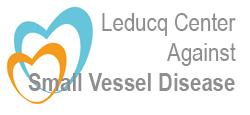Our Research
- Specific Aims
- CADASIL/CARASIL: GOM proteome, altered expression of Notch3 targets, and vascular functional deficits
- From monogenic to common SVD
- Network of genes/proteins driving vessel pathology in CADASIL/CARASIL
- Mechanisms underlying functional deficits and brain pathology in CADASIL/CARASIL
- Significance of CADASIL/CARASIL-related genes/proteins and disease pathways for common SVD
- Methods
Methods
An overview of the methods and approaches deployed to achieve breakthroughs in our understanding of the mechanisms underlying SVD and identify potential therapeutic targets is provided in Figure 3. We have limited our description of materials and methods to those that are the most significant or are unique to LCASVD.
Mouse Models
LCASVD has on hand a unique collection of Notch3-related models, including, but not limited to, three validated CADASIL mouse models (TgPAC-Notch3R169C, TgSM22-hNotch3R90C, TgSM22- hNotch3C428S) and the appropriate control lines; constitutive Notch3-null mice; inducible mouse models of activation and abrogation of Notch3 activity in SMCs (Joutel); a newly created HtrA1-null mouse (Dichgans); and inducible endothelial/SMC-specific Cre driver lines. We also have pharmacological (osmotic mini-pumps) models of short-term Ang II-dependent hypertension and genetic models of life-long renin–angiotensin-dependent hypertension (Faraci, Joutel).
Humans
Three sites have extensive experience in recruiting and phenotyping community participants and patients with SVD. As an example, Drs. Chabriat and Dichgans have assembled and characterized the world’s largest cohort of CADASIL patients6. Dr. Tzourio is the Co-Principal Investigator of the entire 3C community participants study and the Principal Investigator of the Dijon center, which includes 1,590 participants over the age of 65, and extensive clinical and brain MRI data as well as genome-wide data. We (Joutel, Dichgans) also have access to a unique collection of post- mortem tissues from CADASIL patients and have the appropriate administrative authorizations and IRB approvals.
GOM Proteome
We (Joutel) have developed a biochemical fractionation protocol on isolated brain vessels that allows strong enrichment of Notch3ECD (manuscript in preparation). Applying this protocol followed by nano liquid chromatography-tandem mass spectrometry (LC-MS/MS) (collaboration w/J. Vinh, CNRS, Ecole Supérieure Physique Chimie, Paris) together with biochemical and immunohistochemical analyses has allowed us to identify major components of Notch3ECD aggregates in CADASIL mice. To identify new GOM proteins, we will employ a similar proteomic approach using brain vessels isolated from post-mortem patient tissues in which GOM is more abundant.
Gene Expression Profiling
RNA-Seq on brain arteries isolated from TgPAC-Notch3R169C, HtrA1 KO and the appropriate control mice will be used to identify genes that are differentially expressed and uncover molecular changes shared between CADASIL and CARASIL. Candidate genes will be confirmed using quantitative real-time RT-PCR, and those differentially expressed in CADASIL will be further analyzed in the mouse models of activation and abrogation of Notch3 activity (Joutel, Dichgans).
Functional Studies of the Cerebrovasculature in the Mouse
Network investigators (Nelson, Ayata, Faraci) have the unique expertise to perform key measurements on single vascular cells, intact pressurized brain parenchymal arterioles, brain slices and in vivo using transgenic mouse models10,12,14. Key technologies include imaging techniques for monitoring Ca2+ and assessing microvascular pressure-diameter relationships, in vivo CBF and metabolic parameters, as well as electrophysiological approaches.
Imaging. Pressurized arterioles: Ca2+ will be measured in SMCs in pressurized arterioles using the fluorescent indicator Fluo-4 and an Andor spinning disk confocal microscope, and diameter is measured using edge detection4 (Nelson). Brain slices: Ca2+ and diameter measurements will be made using two-photon microscopy and infrared- differential interference contrast (IR-DIC) microscopy, with Ca2+ uncaging capability (Nelson). In vivo: Laser Doppler and speckle flowmetry (CBF), multispectral reflectance imaging (oxy and deoxyhemoglobin, hemoglobin saturation, cerebral blood volume, cerebral metabolic rate of oxygen), full-field pO2 imaging and two-photon pO2 microscopy (intravascular and tissue at single-cell resolution), full-field and two-photon NADH fluorescence, optical coherence tomography (to study vascular anatomy and absolute CBF longitudinally in the same animal), and two-photon imaging of microvascular anatomy27 (Ayata).
Electrophysiology. Whole-cell patch-clamp (perforated and conventional) will be used to measure membrane currents and cell capacitance in astrocytes in slices and freshly isolated SMCs and endothelial cells10 (Nelson). Microelectrodes will be used to measure neuronal excitability in vivo (Ayata) and SMC membrane potential in pressurized parenchymal arterioles (Nelson).
